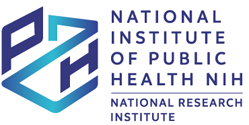RESEARCH PAPER
Pesticide exposure and blood cholinesterase levels among adolescents from farming families in Northern Thailand
1
Faculty of Public Health, Chiang Mai University, Thailand
2
Department of Research and Medical Innovation, Faculty of Medicine Vajira Hospital, Navamindradhiraj University, Thailand
Submission date: 2024-05-26
Final revision date: 2024-06-24
Acceptance date: 2024-06-25
Online publication date: 2024-07-01
Publication date: 2024-08-14
Corresponding author
Parichat Ong-Artborirak
Department of Research and Medical Innovation, Faculty of Medicine Vajira Hospital, Navamindradhiraj University, 3 Thanon Khao, 13000, Bangkok, Thailand
Department of Research and Medical Innovation, Faculty of Medicine Vajira Hospital, Navamindradhiraj University, 3 Thanon Khao, 13000, Bangkok, Thailand
Rocz Panstw Zakl Hig 2024;75(2):175-183
KEYWORDS
TOPICS
ABSTRACT
Background: Adolescents living in agricultural communities may be at risk for the adverse effects of pesticide exposure
because they are involved in agriculture either as a career or to support their families. Objective: The purpose of this study was to investigate the association of farm activities related to pesticide exposure on
blood cholinesterase (ChE) levels among adolescents from farming families in the north of Thailand. Material and Methods: This cross-sectional study included 336 adolescents aged 12-19 years from farming families in
Chiang Dao District, Chiang Mai Province. Data on pesticide exposure was collected using a questionnaire, and blood
ChE activity was assessed using a ChE reactive paper test kit via fingerstick blood sampling. Results: Overall, 51.2% of participants had abnormal blood ChE levels. Univariable logistic regression analysis revealed
that pesticide-related activities on farms associated with abnormal ChE levels were mixing/spraying (OR=10.54;
95%CI=4.63-23.99), assisting or working in areas with pesticide application (OR=5.54; 95%CI=3.45-8.89), and harvesting
(OR=3.70; 95%CI=2.35-5.82). In a multivariable model (Nagelkerke R2=0.374), mixing/spraying (OR=4.90; 95%CI=2.03-11.83) and assisting or working in areas with pesticide application (OR=2.61; 95%CI=1.49-4.57) were significantly
associated with abnormal ChE levels, but harvesting (OR=1.48; 95%CI=0.84-2.61) was not significant after adjusting for
sex, age in years, and entering or walking through a farm. Conclusions: The findings indicated that Thai adolescents living in farming families are at risk of pesticide exposure,
particularly those involved in agricultural activities such as pesticide applicators. An intervention and measure to raise
awareness and reduce the risk of pesticide exposure in adolescents is required.
Share
RELATED ARTICLE
We process personal data collected when visiting the website. The function of obtaining information about users and their behavior is carried out by voluntarily entered information in forms and saving cookies in end devices. Data, including cookies, are used to provide services, improve the user experience and to analyze the traffic in accordance with the Privacy policy. Data are also collected and processed by Google Analytics tool (more).
You can change cookies settings in your browser. Restricted use of cookies in the browser configuration may affect some functionalities of the website.
You can change cookies settings in your browser. Restricted use of cookies in the browser configuration may affect some functionalities of the website.



